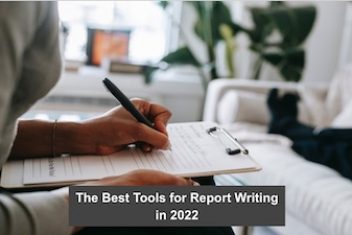By Cathryn Bailey – Enough is enough. We’ve all dealt with a ton of unpleasant things over the last couple of years. Now it’s time to buckle down and change your life. Affiliate marketing can help do just that. Are you ready to get your socks knocked off?If you’ve ever wanted to know about getting started with affiliate marketing in 2022, you’re in the right spot. Keep reading to find out everything you need to know.
3 Steps to Getting Started with Affiliate Marketing in 2022
You can get set up with an authority or niche site today in under an hour. It takes just a few steps to get the technical stuff out of the way. Then you’ll create content, monetize, and then promote it to your tribe.
Step 1: Set Up Your Website
The first thing you want to do is choose an audience. Inside every niche are micro-ecosystems. As an example, let’s take a look at the fitness niche.
Males and females might want different programs. People who are new to fitness might want different content than people who are experienced. Someone who wants to bulk up doesn’t need the same information as someone who wants to lose weight. Each of these microsystems is going to use fitness affiliate programs, but they’ll vary depending on the content.
Once you’ve decided on your buyer persona as well as your niche, you’ll need to choose a host for your website.
Popular hosting platforms include Siteground and Cloudways. The longer you’re willing to commit contract-wise, the cheaper your plan will be. After getting set up with your host, choose a theme. Make it easy on yourself by purchasing a premium WordPress theme. Using a free theme turns your website into hacker bait.
Check out the GeneratePress theme. It has great support and it’s user-friendly even for folks who are new to the affiliate marketing game. Now all you have left to do is to play around with design and color schemes to make your website exactly what you want.
Read: Best Linux Web Hosting Services
Step 2: Create Content and Monetize with Affiliate Links
Writing blog posts can be incredibly difficult if you’ve never done it before. Just like anything else, the more you do it, the better you’ll get.
Start off by doing some keyword research. The best online marketing tools are all-in-one tools that offer a variety of packages to give every level of marketer exactly what they need.
Ahrefs and SEMrush will give you access to keyword research tools and much more. You’ll also be able to get ideas for your content by cross-analyzing the content and links of your competition as well as a variety of SEO tools.
Next, you’ll want to build your articles around these keywords. This keyword should be included in the title, at least one header, and then sprinkled throughout the content. But be careful not to overstuff these keywords to the point where they feel unnatural.
Secondary keywords are another great way to get traffic to your website with SEO. Throw these in H2 and H3 headers and occasionally in content where it works.
Internal and external links aren’t just for SEO purposes. They have utility for your readership. If you have a piece of content that’s ranking well, make sure to apply internal links to content that can’t rank due to keyword difficulty.
External links should always be used anytime you’re quoting another person or website, you’re including any kind of data, or there are great pieces of content from highly authoritative sources that agree with what you’re trying to say.
Affiliate links can go anywhere in your content. Review sites will usually have links towards the end of the content. But you can also include links throughout if it’s an informational post.
The real key is knowing when to not stuff affiliate marketing links. There is too much of a good thing. One to three for each blog post is plenty.
Core Web Vitals and Reviews Update
Two of the most important updates that have come out lately involve your core web vitals and product reviews.
The reviews update is designed to reward the best review websites and punish those that are still using old-school techniques. Do the review yourself with products you actually own. Don’t just include the specs.
Provide in-depth articles with honest opinions and give multiple links for buying options. Don’t just link to Amazon. Give links to Wal-Mart, Best Buy, and any other online store that sells the same merchandise.
Core web vitals mean a lot of things to your website. What it comes down to are load times. The faster, the better. It’s nearly impossible to make your website or blog too fast.
You can do this by using the right plugins. This includes an SEO plugin, one for caching, as well as an image optimizer. Go here to get your page speed score. You want to have a 90 or better.
Read: How To Choose SEO Tools and Services For Your Business
Step 3: Promote Content and Monetize with Additional Strategies
While SEO will usually be the best way to get traffic to your website, you can also get some great traffic by promoting your blog on social media. Sites like Instagram, Twitter, Facebook, and Pinterest are great platforms for promoting blog posts.
It can be difficult to promote affiliate links directly on these platforms. This is what’s so great about building an email list. Many programs allow you to include links in your newsletters and emails.
Takeaway
Even after you build a great website, work to become an SEO expert and promote your heart out on social media. It’s still going to take time, dedication, and patience to be successful.
Try not to get too excited and spend too much time monitoring social platforms and being overly salesy with them and your blog posts. Focus on building great content and allow Google to do its thing.
Thanks for hanging out with us today. If you enjoyed this post, you’ll love this one on the benefits of hiring a local SEO company.
If you like the content, we would appreciate your support by buying us a coffee. Thank you so much for your visit and support.



